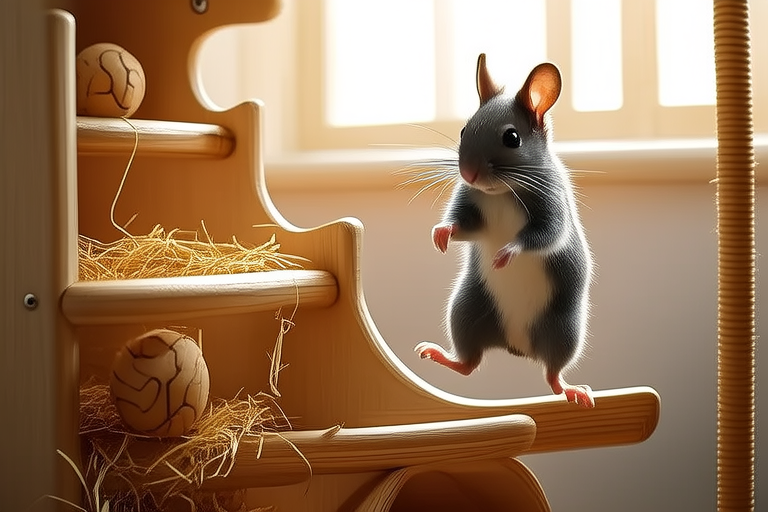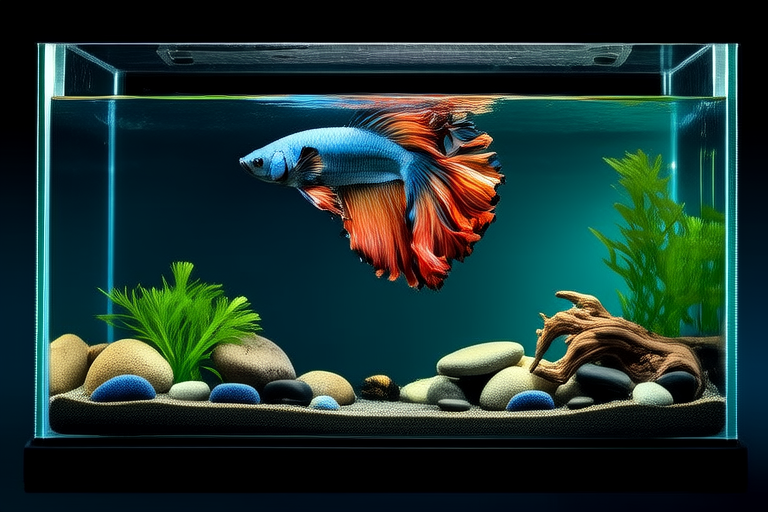
Adorable and Active: How to Create the Perfect Habitat for Your Chinchilla
Welcome to the fascinating world of chinchillas! These small, fluffy creatures are cherished for their incredibly soft fur and playful demeanor. Originating from the Andes Mountains in South America, chinchillas have adapted to cold, dry climates, making them uniquely suited for life as pets in many homes. With proper care and attention, you can create a thriving environment that meets all their needs, ensuring they remain happy, healthy, and active.
The Ideal Cage Size
Choosing the right cage is crucial for your chinchilla’s well-being. The cage should be spacious enough to allow for plenty of movement and exploration. A minimum size of 30 inches wide, 24 inches deep, and 24 inches high is recommended for a single chinchilla. However, larger cages are always preferable, especially if you plan to house multiple chinchillas together. Ensure the cage has adequate ventilation and is positioned away from direct sunlight and drafts. Wire-bottomed cages are generally unsuitable due to the risk of foot injuries; instead, opt for solid flooring covered with appropriate bedding.
Selecting Appropriate Bedding
Bedding plays a significant role in keeping your chinchilla comfortable and clean. Opt for dust-free, absorbent materials like shredded paper or wood shavings (avoid cedar and pine, which can irritate respiratory systems). Additionally, provide soft fleece blankets or towels for nesting. These materials not only make the habitat more comfortable but also encourage natural behaviors like burrowing and digging. Regularly change the bedding to maintain cleanliness and prevent odor buildup.
Temperature Control
Chinchillas thrive in cool environments, ideally between 60°F and 70°F (15°C to 21°C). They are highly sensitive to heat and can suffer from heatstroke at temperatures above 80°F (27°C). To maintain optimal conditions, use air conditioning during warmer months and provide ample ventilation year-round. A shallow dish filled with clean, cool water can help your chinchilla regulate its body temperature. Never place the cage near windows where it could be exposed to direct sunlight or sudden temperature changes.
Toys and Hiding Spots
Toys and hiding spots are essential for stimulating your chinchilla’s mind and body. Chinchillas enjoy chewing, so offer safe, untreated wood blocks or cardboard rolls for gnawing. Balls, tunnels, and ladders made from non-toxic materials provide opportunities for exercise and exploration. Hiding spots, such as wooden houses or fabric pouches, offer security and reduce stress. Rotate toys periodically to keep your chinchilla engaged and prevent boredom.
Maintaining Hygiene
Regular cleaning is vital for maintaining a hygienic habitat. Clean the cage thoroughly once a week, removing all soiled bedding and debris. Use mild, pet-safe disinfectants to sanitize surfaces, avoiding harsh chemicals that could harm your chinchilla. Rinse the cage thoroughly after disinfecting and allow it to dry completely before adding fresh bedding. Providing a dust bath several times a week helps keep your chinchilla’s fur clean and prevents skin issues. Always supervise dust baths to prevent accidental ingestion.
Observing Your Chinchilla’s Behavior
Pay close attention to your chinchilla’s behavior to ensure they are comfortable and healthy in their environment. Signs of contentment include active play, grooming, and social interaction. Conversely, lethargy, excessive grooming, or changes in eating habits may indicate discomfort or illness. If you notice any concerning behaviors, consult a veterinarian specializing in exotic animals for guidance. Regular health checks and timely veterinary care are essential for addressing any potential issues early on.
Actionable Steps for New and Experienced Owners
- Choose the Right Cage: Select a spacious, well-ventilated cage with solid flooring and adequate height for jumping.
- Provide Comfortable Bedding: Use dust-free, absorbent bedding materials and add soft blankets for nesting.
- Control Temperature: Maintain a cool environment and avoid placing the cage near sources of heat or direct sunlight.
- Offer Toys and Hiding Spots: Include chew toys, tunnels, and hiding spots to promote mental and physical stimulation.
- Establish a Cleaning Routine: Clean the cage weekly, using mild disinfectants and providing fresh bedding regularly.
- Monitor Your Chinchilla’s Health: Watch for signs of comfort or distress and seek professional advice if necessary.
In conclusion, creating the perfect habitat for your chinchilla requires careful consideration of their unique needs. By providing a spacious, well-equipped cage, appropriate bedding, and a controlled environment, you can ensure your chinchilla leads a happy and healthy life. Regular cleaning, mental stimulation through toys and hiding spots, and attentive monitoring of their behavior will further contribute to their well-being. Whether you’re a new or experienced chinchilla owner, these steps will guide you in crafting an environment where your pet can thrive.



